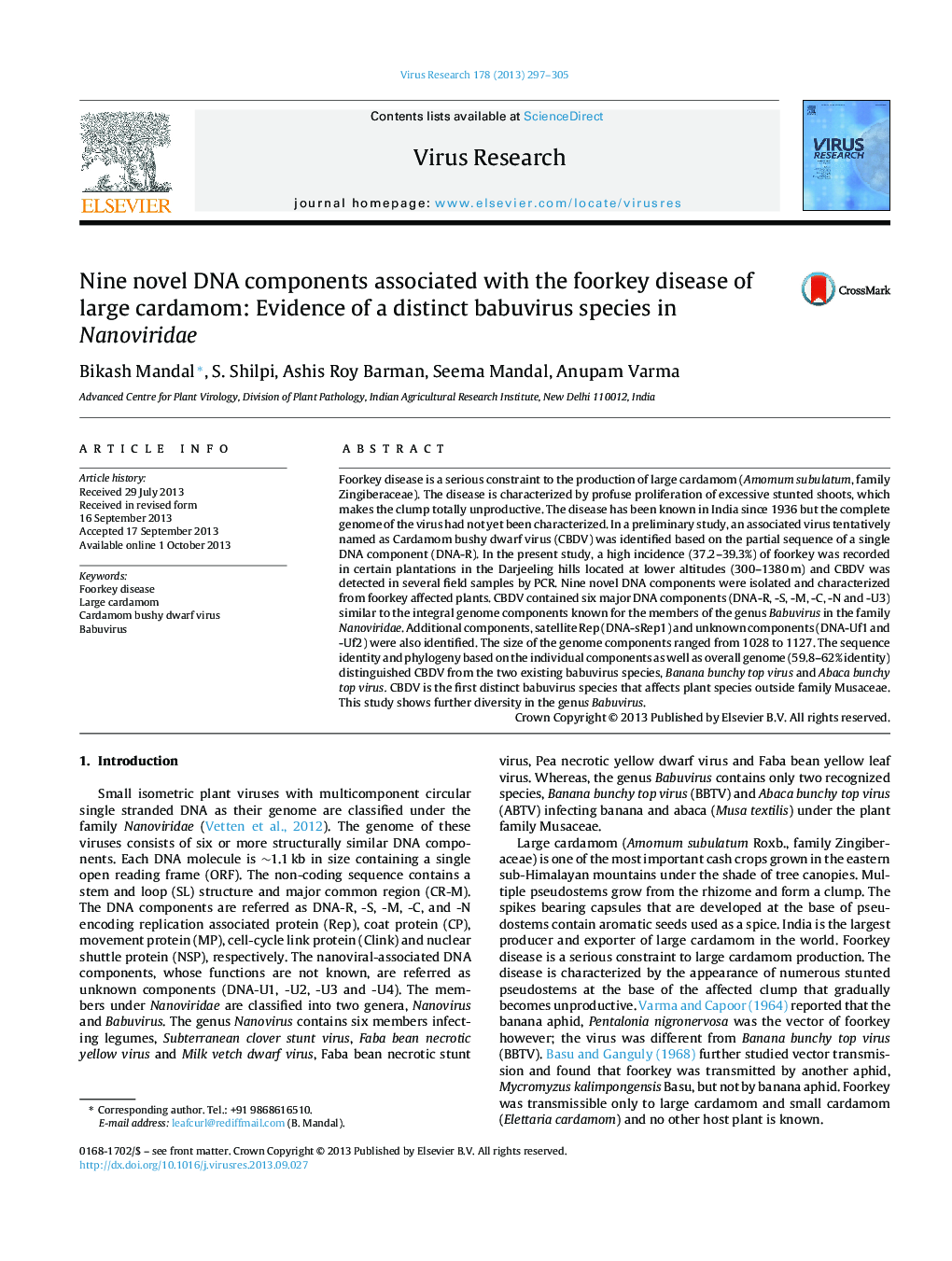| Article ID | Journal | Published Year | Pages | File Type |
|---|---|---|---|---|
| 6142674 | Virus Research | 2013 | 9 Pages |
Abstract
Foorkey disease is a serious constraint to the production of large cardamom (Amomum subulatum, family Zingiberaceae). The disease is characterized by profuse proliferation of excessive stunted shoots, which makes the clump totally unproductive. The disease has been known in India since 1936 but the complete genome of the virus had not yet been characterized. In a preliminary study, an associated virus tentatively named as Cardamom bushy dwarf virus (CBDV) was identified based on the partial sequence of a single DNA component (DNA-R). In the present study, a high incidence (37.2-39.3%) of foorkey was recorded in certain plantations in the Darjeeling hills located at lower altitudes (300-1380Â m) and CBDV was detected in several field samples by PCR. Nine novel DNA components were isolated and characterized from foorkey affected plants. CBDV contained six major DNA components (DNA-R, -S, -M, -C, -N and -U3) similar to the integral genome components known for the members of the genus Babuvirus in the family Nanoviridae. Additional components, satellite Rep (DNA-sRep1) and unknown components (DNA-Uf1 and -Uf2) were also identified. The size of the genome components ranged from 1028 to 1127. The sequence identity and phylogeny based on the individual components as well as overall genome (59.8-62% identity) distinguished CBDV from the two existing babuvirus species, Banana bunchy top virus and Abaca bunchy top virus. CBDV is the first distinct babuvirus species that affects plant species outside family Musaceae. This study shows further diversity in the genus Babuvirus.
Keywords
Related Topics
Life Sciences
Immunology and Microbiology
Virology
Authors
Bikash Mandal, S. Shilpi, Ashis Roy Barman, Seema Mandal, Anupam Varma,
